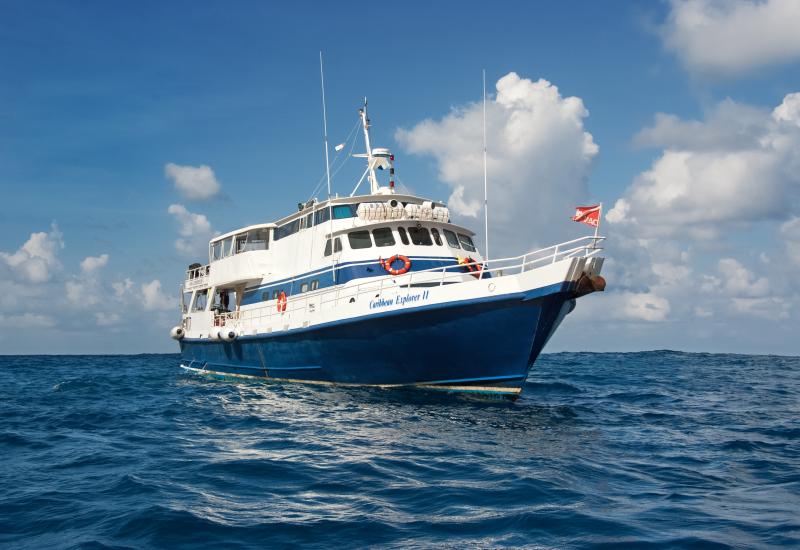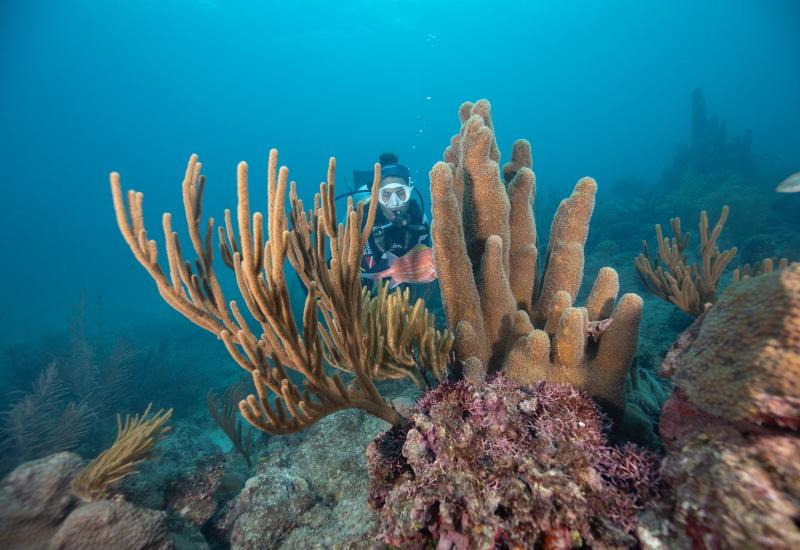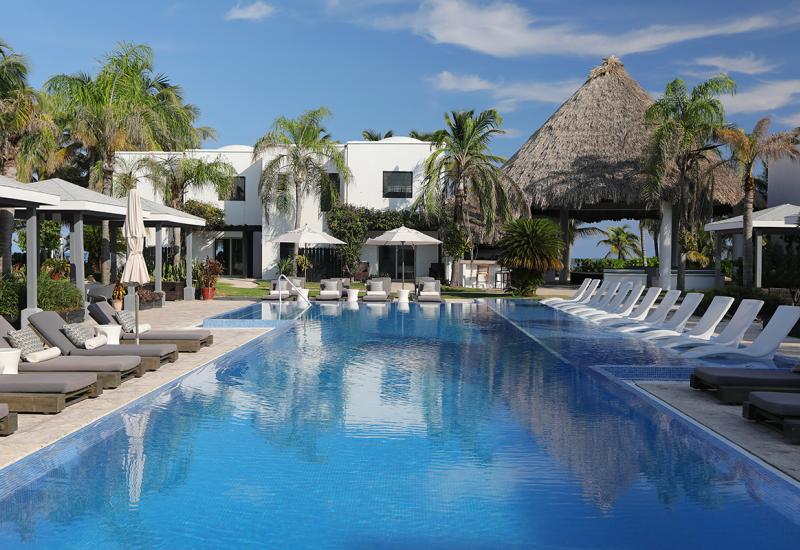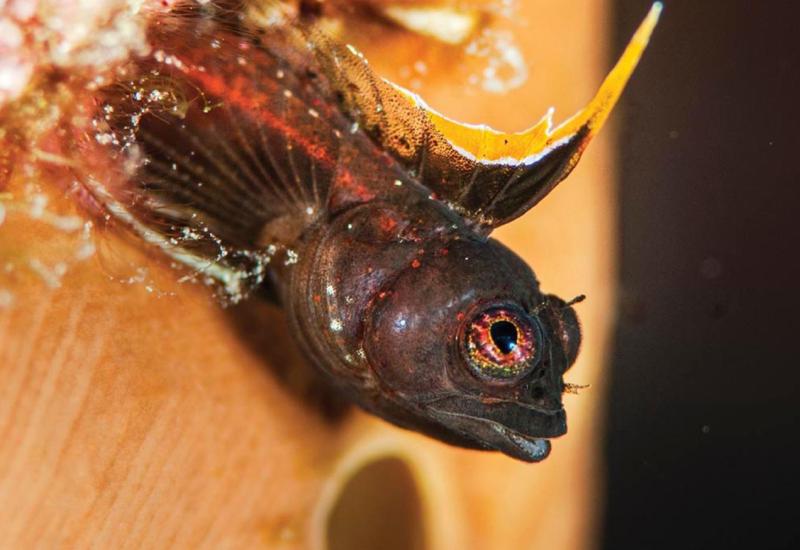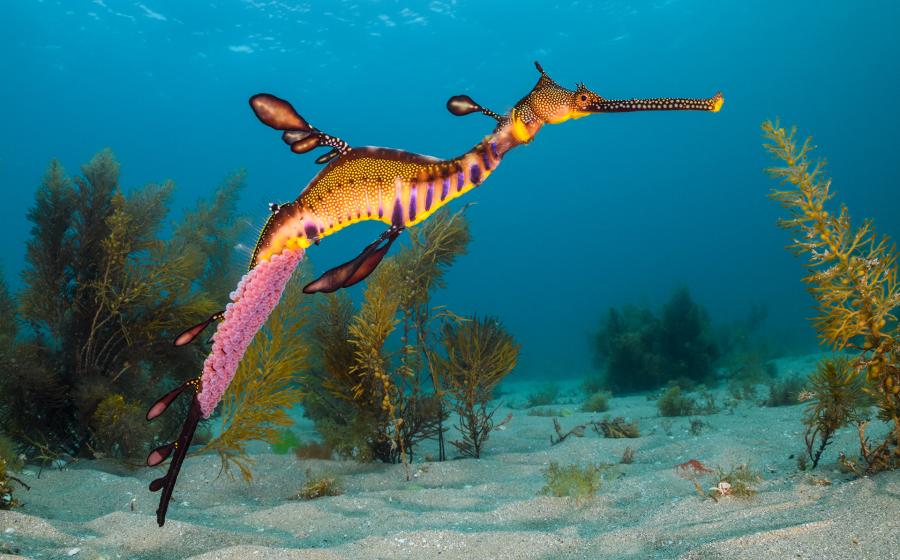Unknown Dominica: The Central Coast
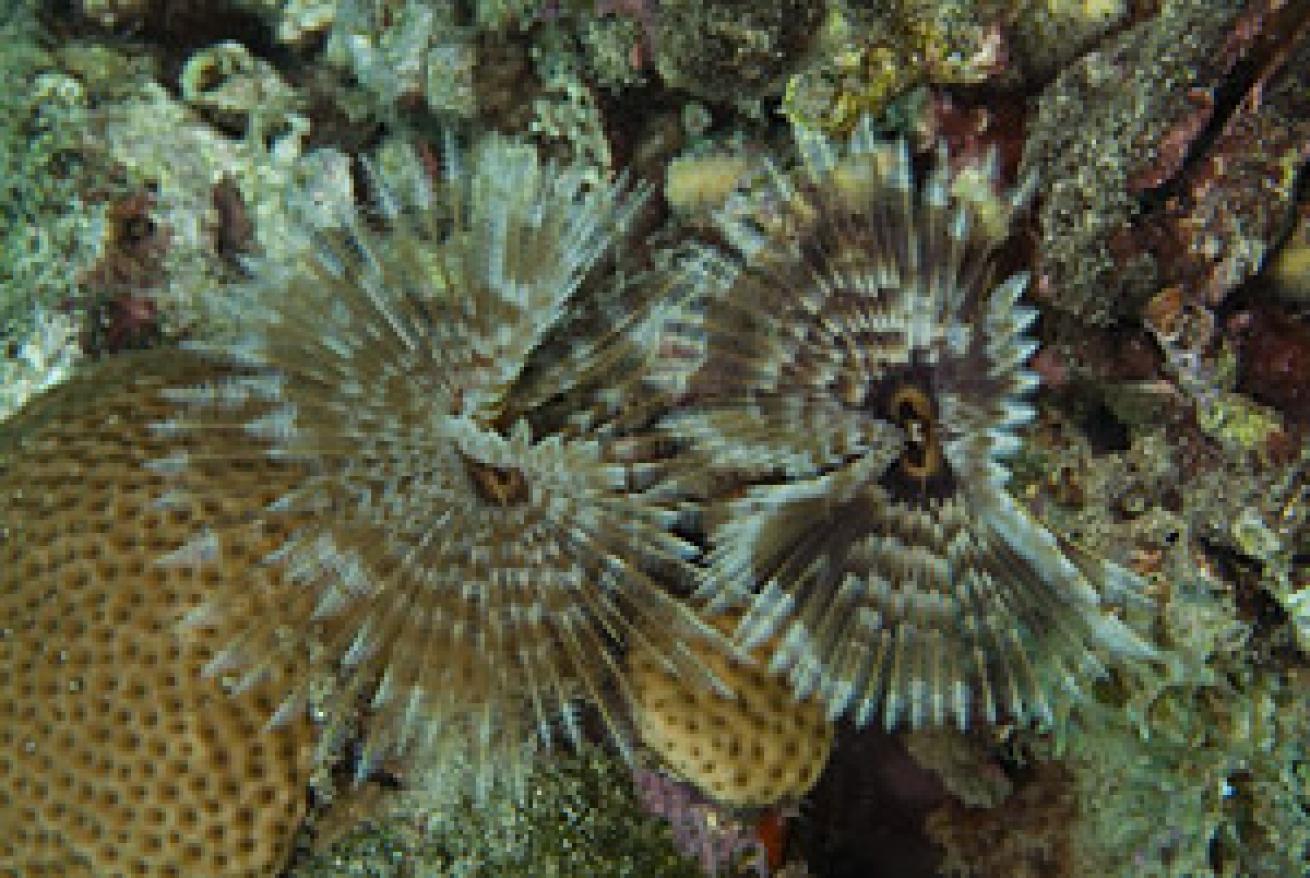
For a complete guide to Dominica's Caribbean dive sites, read The Natural.
Dominica's southwest and northwest coasts are better known than its central coast region, but if you get the chance, there is some great diving just minutes from dive shops located in this area. The mid-coastal region of Dominica offers the same remarkable topside landscape as the north and south but a less dramatic underwater topography. Still, the region is worth exploring for its richness of unique and diverse Caribbean marine life, especially if you like macro photography.
The 12 named dive sites here (mostly off Salisbury Beach, Grande Savane, St. Joseph's and Tarou) feature mostly patch reefs sloping down to steep walls — including Whale Shark Reef, Rodney's Rock, Rena's Hole, Castaways Reef and Nose Reef. Larger blue-water pelagics like spotted eagle rays and rainbow runners that are largely absent from southern sites can be spotted here, and squadrons of barracuda make frequent appearances. Plus, very small critters like seahorses and an assortment of rare and elusive creatures like batfish can be found very close to shore at sites you won't find named on any dive map.
Whale Shark Reef Don't let the name fool you. While legend has it that a whale shark was once spotted here, this site isn't Belize, Honduras or the Galapagos Islands, some of the well-known places where the world's biggest fish calls home. But there's nothing to be disappointed about at this very impressive site. It's a deep dive to almost 100 feet, off the coast of Salisbury. You start it in 40 to 50 feet of water and swim in a rectangular pattern, with the reef on the right.
There are tons of ridged, grooved barrel sponges, towering over ledges, under which turtles are napping. Stately and iridescent blue vase sponges dominate another part of the landscape. Moray and yellow eels and lobsters also reside in the cracks and as you descend further, turn a corner into a canyon, it's not surprising to see a spotted burrfish or two. But later, after eyeballing tropicals like grunts, French angelfish, blue chromis and parrotfish, the best part of the dive comes when watching the tiny Pederson cleaner shrimp go to work cleaning eels' mouths and watching yellowline arrow crabs perform their seemingly choreographed dance moves. Indeed, this is a great dive site for marveling at the mystery of animal behavior.
Nose Reef
At Nose Reef, located off Grand Savanne, you can drift lazily atop the reef and encounter small schools of fish like silvery bogas. From the shallow reef's edge, you can slip down the wall to explore the many protrusions and shelves on the wall's face. Along with Whale Shark Reef, is one of the best mid-island sites for encountering bigger animals like Spanish mackerels and jacks.
Rena's Reef
Local divers also call this mid-island site "Rena's Hole." It's a two-part reef system, with a shallow and a deeper part. This dive often follows Whale Shark Reef, so divers stick to the shallows, never descending beyond 50 feet, and swim along a northeasterly path along the reef. The big attractions here are small holes to look for life and the explosion of rainbow colors of hard and soft corals — lavender, violet, orange and yellow, to name a few. There are a few caves at this site, where bigeye snappers hover, as if standing guard. Coral heads are crawling with yellowline arrow crabs and encrusting sponges are attached to the cave walls. The cave ceilings are about seven feet high and it's not surprising to occasionally see turtles swimming over them. Spotted morays and lizardfish also make for intriguing marine life highlights.
Central Coast Muck Diving
Because of the number of unusual creatures that are rare elsewhere in the Caribbean, Dominica's mid-island region is also perfect for muck diving. Making a muck dive is like going on a treasure hunt for small critters. It's a dive usually made in very shallow water, usually no deeper than 15 feet or 20 feet, over sand flats, eel grass beds and coral rubble where you'll find Dominica's strangest and unusual (at least for the Caribbean) creatures: barrel-shaped bumblebee shrimp, shortnose batfish with their unicorn-like projections, squadrons of flying gurnards, dense clouds of micid shrimp, speckled bandtail puffers.
A small unnamed pier, near East Carib Dive Center, just off Salisbury Beach, is home to longsnout seahorses. There are also lots of cleaning stations, and a good number of blennies in the scattered coral heads. In shallow near the pier, look for shortnose batfish, difficult to spot because of their propensity to cover themselves in sand.
Castaways Reef, north of the Layou River, is another site known for its muck diving. A fairly shallow dive with a max depth of 55 feet, Castaways is a good place to look for octopuses, frogfish, seahorses and flying gurnards. Rodney's Rock, located south of the town of Tarou, is another shallow dive boasting the same kinds of creatures.
The diving and the topside pace are decidedly low-key and slower than in the south or north, but there are many treasures to be found along Dominica's central coast.
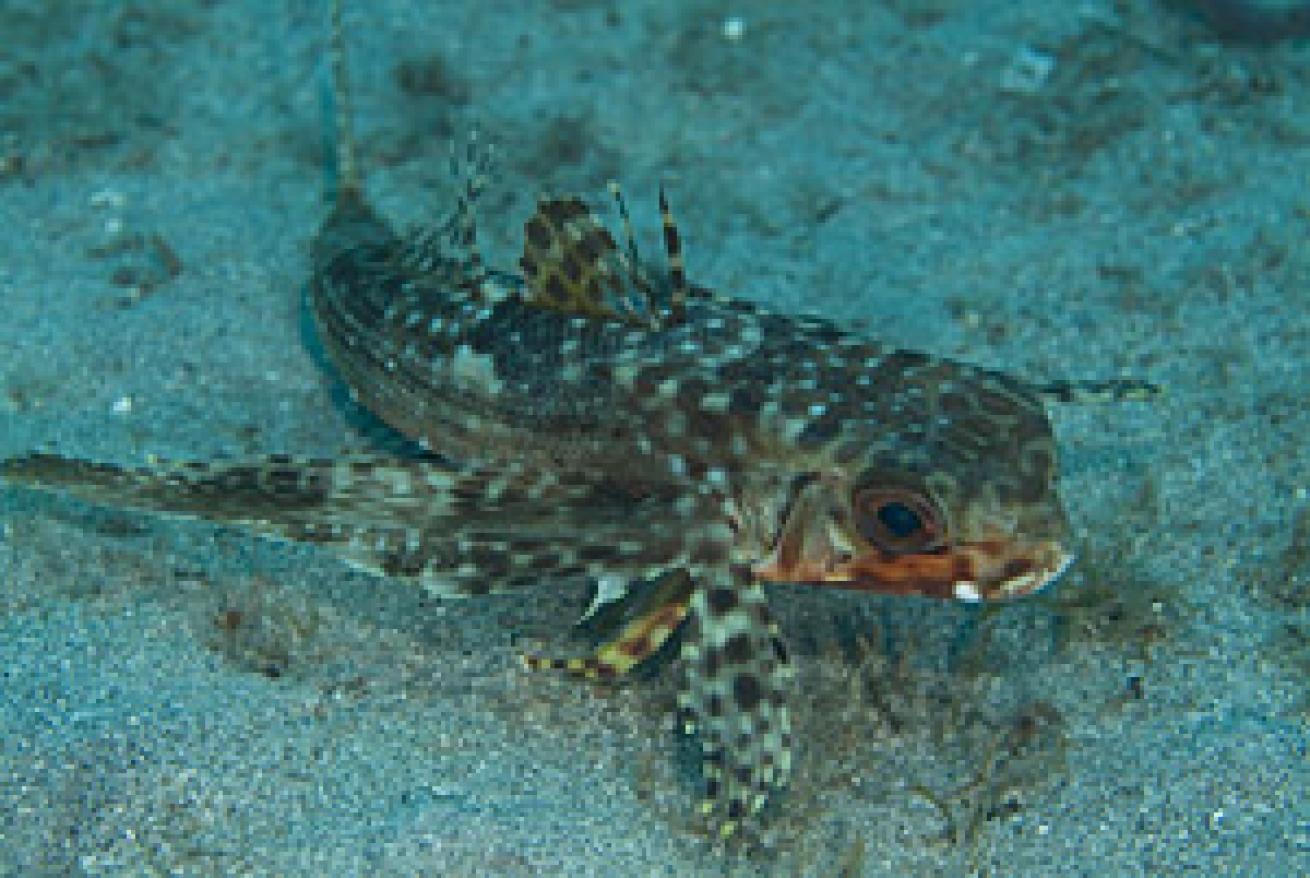
Central Coast Topside Adventures
A number of adventures are found on the scenic Layou River. You can take guided kayak tour (the river has some light rapids), sign up for a jeep safari, go river tubing or have fun on a zip line and canopy tour. For more information and tickets, check Wacky Rollers on Fort Street in Roseau.
Dominica's Central Coast Travel Savvy
Getting Here & Around: Because its tiny international airport, Melville Hall (DOM) can't support big jets, there are no nonstop flights between the island and the U.S. mainland. You may have to overnight in San Juan, Puerto Rico, before arriving in Dominica. Plenty of carriers fly to San Juan, with American offering daily mid-morning nonstops from there to Dominica.
Once you're on the island, your dive operator or resort should have your transfer covered, via a shuttle van or taxi. If you are staying in or near Salisbury, it's about an hour's drive from the airport.
Dive Resorts & Operators:
East Carib Dive Center is tucked away off the main road in the small village of Salisbury Beach. In addition to the low-key diving, it's a great place to grab a bite to eat and enjoy a cold beer at Chez la Doudou beach bar.
Sunset Bay Club Beach Resort and Seaside Dive Center is an intimate, all-inclusive resort located on Batalie Beach Open-air dining at the 4 Seasons restaurant.

